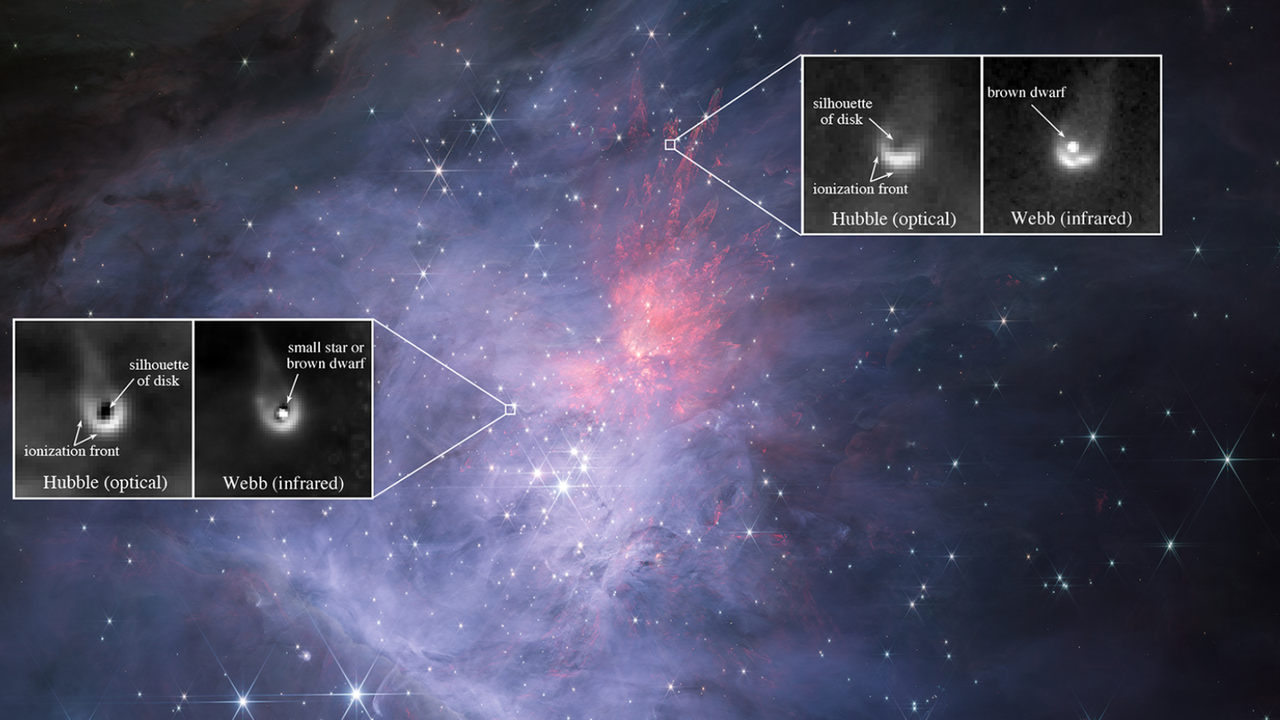Now Reading: James Webb Telescope Discovers Rare Planet-Forming Disk Around ‘Failed Star
-
01
James Webb Telescope Discovers Rare Planet-Forming Disk Around ‘Failed Star
James Webb Telescope Discovers Rare Planet-Forming Disk Around ‘Failed Star

Fast Summary
- NASA’s James Webb Space Telescope (JWST) observed a unique, chemically rich gas adn dust disk around the brown dwarf Cha Hα 1, a “failed star.”
- Brown dwarfs cannot sustain hydrogen fusion like true stars but provide valuable insights into planetary system formation.
- The disk contains complex molecules such as hydrocarbons (methane, acetylene, ethane, benzene), water, and large silicate dust grains. Oxygen-rich and carbon-rich environments coexist within the disk.
- observations from JWST align closely with prior data captured by NASA’s Spitzer Space Telescope in 2005, ensuring consistency in findings.
- The calmer conditions around brown dwarfs allow for slower mixing of chemical materials compared to sun-like stars. This environment provides distinct conditions for planet formation processes.
- Large dust grains found in the inner regions of the disk suggest advanced stages of chemical evolution critical for planet building.
- scientists identified certain unidentified molecular features that may represent new or poorly understood compounds requiring further analysis.

Image credit: NASA/ESA/CSA
Indian Opinion Analysis
India’s ambitions in space science can benefit from investigations like this one involving JWST that shed light on uncharted celestial phenomena vital to understanding planetary formations. As India advances its space programs (e.g., Chandrayaan missions), research collaborations with international agencies like NASA could allow Indian scientists to study such intricate observations further.
The potential discovery of unexplored molecules within Cha Hα 1’s disk demonstrates how cutting-edge technology can reveal hidden dimensions of cosmic chemistry. With similar advancements underway via ISRO’s projects-such as Aditya-L1-to observe solar activity or possible interstellar missions envisioned over time, India has an opportunity to expand its astrophysical scope beyond earth-bound phenomena.
Moreover, exploring how chemical compositions evolve differently under varied environments-including those seen around smaller stellar objects-may open pathways to test theories governing planetary habitability under conditions outside our system framework. For global astronomy efforts where access-sharing telescope data is increasingly common practice among nations involved morphs opportunities inclusively globally growth science /



























